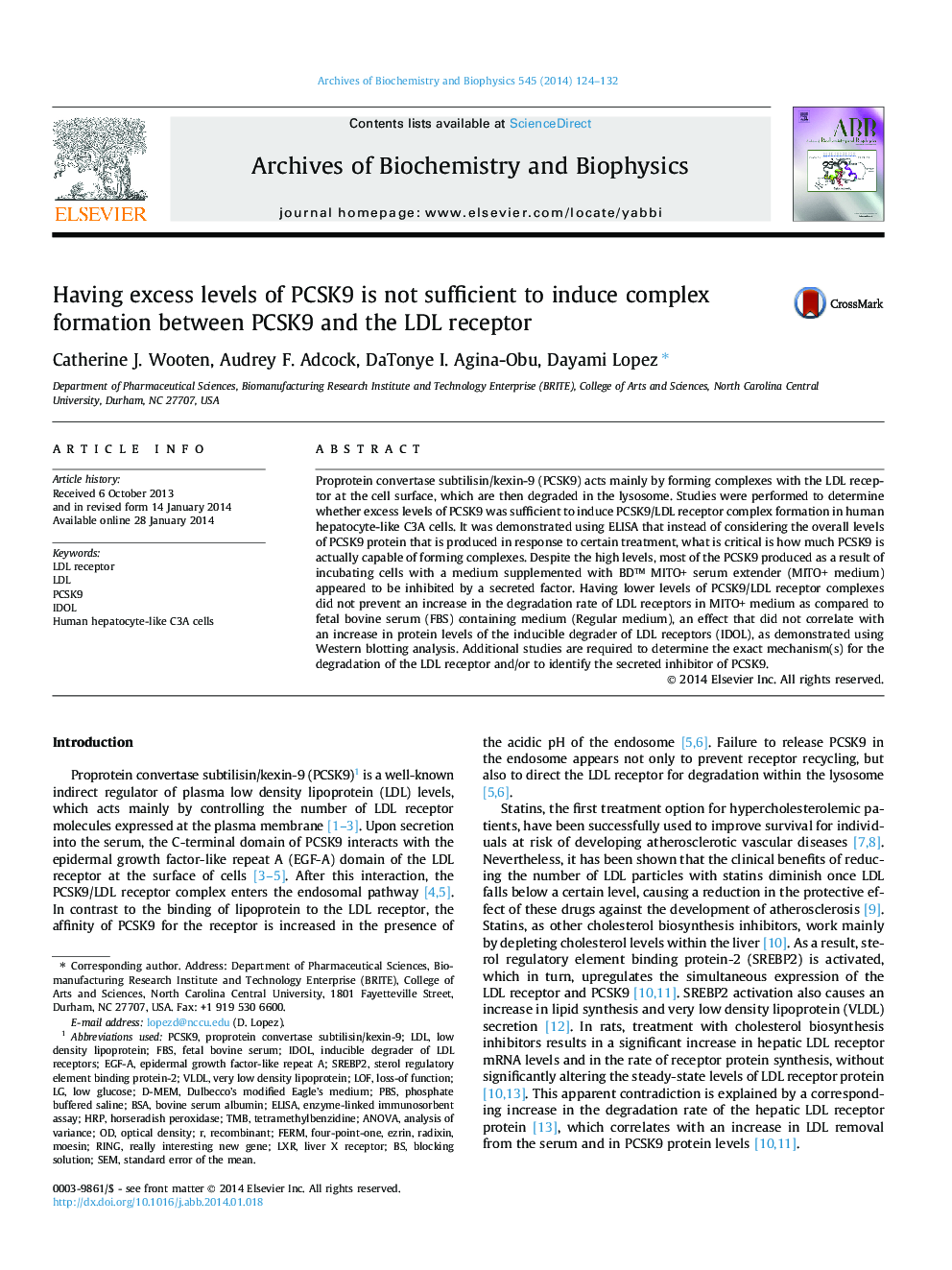| Article ID | Journal | Published Year | Pages | File Type |
|---|---|---|---|---|
| 1925259 | Archives of Biochemistry and Biophysics | 2014 | 9 Pages |
•Formation of PCSK9/LDL receptor complexes is not always determined by excess PCSK9.•A secreted inhibitor of PCSK9 function appears to control this process.•Studies are still required to identify the secreted inhibitor of PCSK9.
Proprotein convertase subtilisin/kexin-9 (PCSK9) acts mainly by forming complexes with the LDL receptor at the cell surface, which are then degraded in the lysosome. Studies were performed to determine whether excess levels of PCSK9 was sufficient to induce PCSK9/LDL receptor complex formation in human hepatocyte-like C3A cells. It was demonstrated using ELISA that instead of considering the overall levels of PCSK9 protein that is produced in response to certain treatment, what is critical is how much PCSK9 is actually capable of forming complexes. Despite the high levels, most of the PCSK9 produced as a result of incubating cells with a medium supplemented with BD™ MITO+ serum extender (MITO+ medium) appeared to be inhibited by a secreted factor. Having lower levels of PCSK9/LDL receptor complexes did not prevent an increase in the degradation rate of LDL receptors in MITO+ medium as compared to fetal bovine serum (FBS) containing medium (Regular medium), an effect that did not correlate with an increase in protein levels of the inducible degrader of LDL receptors (IDOL), as demonstrated using Western blotting analysis. Additional studies are required to determine the exact mechanism(s) for the degradation of the LDL receptor and/or to identify the secreted inhibitor of PCSK9.
